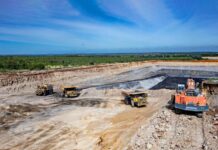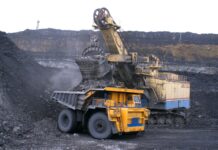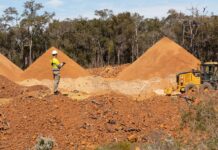Managing work health and safety across Australia
Australia’s work health and safety (WHS) landscape is defined by a regulatory framework designed to minimise workplace risks and enhance safety.
Not only does this framework help reduce the frequency of workplace injuries, but it also plays a crucial role in fostering a culture of safety that reaches all levels of business operations.
Despite the strength of these regulations, challenges still arise due to the evolving nature of work environments.
The Commonwealth Work Health and Safety Act 2011 (WHS Act) is a crucial part of legislation in Australia’s commitment to workplace safety across various sectors.
It was developed through extensive consultation with government entities, industry experts and the public to ensure effectiveness and practicality.
The WHS Act is part of a broader framework known as the model Work Health and Safety laws, which includes the model WHS Act, Regulations and Codes of Practice.
Safe Work Australia introduced these model laws in 2011 with all Australian states and territories adopting them, except Victoria which follows its Occupational Health and Safety Act 2004 with similar conditions.
The legislation covers a thorough approach to managing workplace hazards, outlining the duties of employees, employers and the roles of safety authorities.
The main aim of the framework is to provide a balanced and consistent structure to maintain the health and safety of workers and workplaces.
It sets out specific requirements for managing particular hazards and risks, including machinery operations, noise and falls.
The WHS laws are designed not only to protect but also to provide clear and accessible guidance for all workplace participants, reinforcing Australia’s commitment to maintaining safe working environments.
The Australian Mining Review speaks with Standards Australia engagement manager Ben Russell about how it’s important to have adequate protective equipment to keep workers safe and the future of Australia’s workplace health and safety standards.

Standards Australia engagement manager Ben Russell.
“Safety is paramount when developing personal protective equipment (PPE) standards,” he said. “Ensuring the right equipment is used and that is complies with Australian standards is crucial.
“While accidents can still occur, following proper care and safety processes minimises risks, highlighting the importance of having the right PPE.
“Health and safety standards and legislation aim to keep workers safe, but PPE is essential for providing protection or reducing the impact of critical incidents.
“Adequate protection gives workers confidence that they are safeguarded against hazards and extreme conditions.”
Key standards in the WHS landscape
Standards are important in WHS Regulations as they set out specific technical and operational requirements that organisations must meet.
These standards have been designed to ensure workplace activities are carried out safely, minimising the risk of injury or illness.
Standards across WHS Regulations serve multiple purposes, including risk management, legal compliance, enhanced safety culture and consistent practices across the country.
Below are some key standards reference in the model WHS Regulations:
AS/NZS ISO 45001:2018
Occupational Health and Safety Management Systems
This standard provides a framework for organisations to establish, implement and maintain effective health and safety management systems. It focuses on reducing workplace injuries and illnesses by improving safety across various operational processes.
AS/NZS 3012:2019
Electrical Installations – Construction and Demolition Sites
This standard provides comprehensive requirements for electrical installations on construction sites, addressing risks from setup to dismantling. It helps ensure electrical safety and is critical for preventing serious incidents and fatalities associated with electrical work.
AS/NZS 1716:2012
Respiratory Protective Devices
Outlines specific requirements, testing and marking of respirators to protect against polluted air and hazardous substances. This standard is important for industries that involve exposure to harmful dusts and chemicals, helping ensure workers are adequately protected in potentially hazardous environments.
AS/NZS 1891.1:2020
Industrial Fall-Arrest Systems and Devices – Part 1: Manufacturing Requirements for Safety Harnesses
This focuses on the manufacturing specifications for harnesses used to prevent falls from heights, addressing a common cause of serious and fatal injuries in industries such as construction and maintenance.
Incorporating these standards into the workplace involves a systematic approach which includes training employees, establishing clear policies, regular safety audits and continuous compliance monitoring.
Through model WHS laws and standards outlined in the model WHS Regulations, Australia aims to reduce workplace injuries and fatalities by creating environments where health and safety hazards are systematically controlled.
Compliance with these standards is not just about meeting the legal requirements, but it’s also a crucial component of corporate responsibility and ethical business practices.
Industry predictions and future focus
According to Standards Australia, the future of Australia’s WHS sector will be shaped by technological advancements, demographic shifts and new working patterns.
Artificial intelligence will play a significant role in this, enhancing safety through predictive analytics and improved emergency responses.
The shift towards hybrid and remote work necessitates updated WHS practices that ensure the safety outside traditional office environments, addressing ergonomic and mental health considerations.
“As reliance on equipment for high-risk work increases, safe operation and manufacturing standards will evolve, leading to fewer accidents and injuries as workers are less exposed to dangerous environments,” Mr Russell said.
“However, some areas will still require human presence and psychosocial hazards will remain a concern regardless of the physical workspace.
“Artificial intelligence adds another tool for companies to enhance safety, efficiency and cost-effectiveness.
“It can help develop models to better analyse workplace injury data and predict incidents before they occur by understanding the landscape.”
Additionally, the aging workforce will require tailored WHS strategies to accommodate specific health and convenient needs to keep older workers safe.
The expansion of the gig economy also introduces unique challenges, necessitating bespoke safety standards for contract-based work.
Mental health continues to gain recognition as an integral part of WHS, requiring businesses to integrate mental well-being into their safety strategies.
These evolving trends emphasise the need for continual adaption and innovation in WHS practices, ensuring protection and productivity across all types of work environments.
“There will likely be a shift towards addressing psychosocial risks, which are becoming more prevalent,” Mr Russell said.
“Safe Work Australia reported that mental health conditions accounted for 9% of all serious workers’ compensation claims during 2021-2022, a 36.9% increase since 2017-2018.
“As workplaces report these issues more frequently, and with the rise of shorter job stints and remote working, it becomes harder for employers to identify safety or mental health risks.
“Standards like AS/NZS ISO 45003:2021, which provides guidelines for managing psychosocial risks, are crucial in addressing these challenges.”
Continuously improving WHS practices is crucial for safeguarding Australian workers not just physically but mentally as well.
Companies should stay up to date with the latest standards, embrace technological advancements and understand regulatory changes to ensure workers have the highest levels of safety and compliance.

























